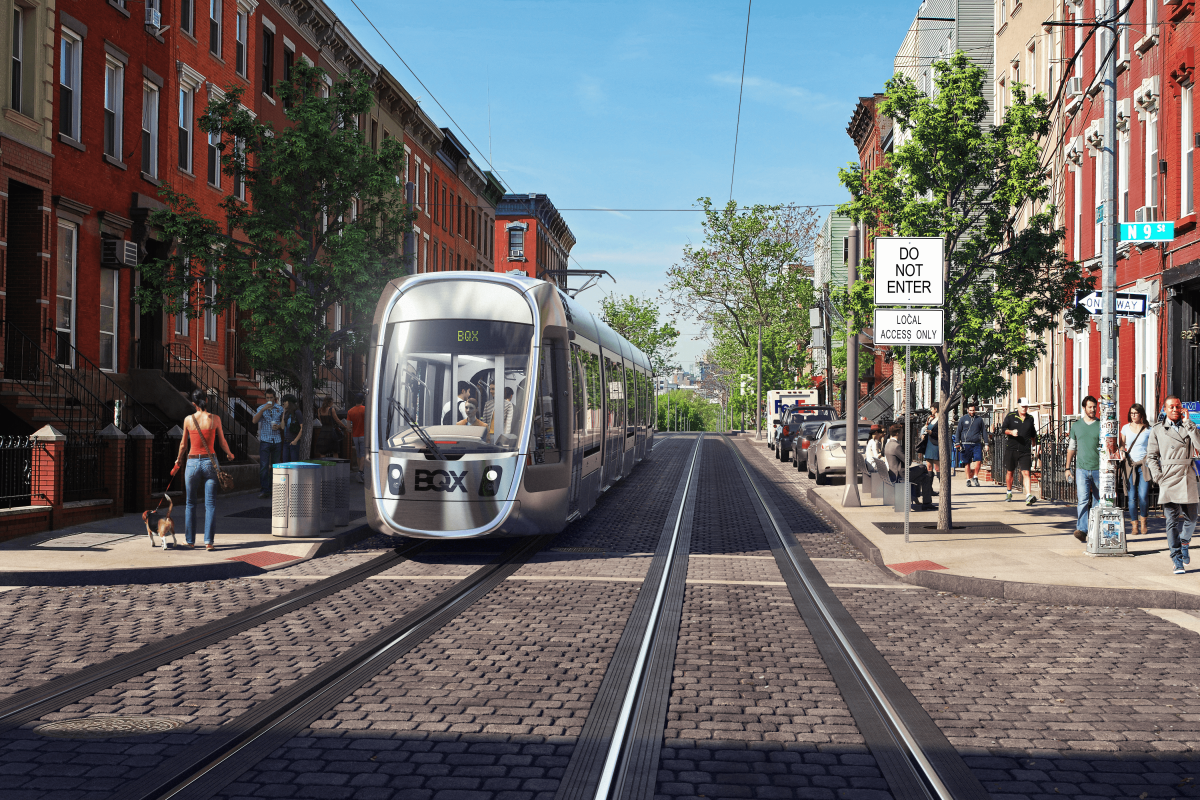They’re BQ-exasperated!
Downtown civic gurus are questioning the sanity of Mayor Bill de Blasio’s recently-resurrected pet project to build a $2.73 billion trolley along the Brooklyn and Queens waterfront, arguing that dedicated bus lanes would be more efficient and cost about $800 million less.
“Why are we moving forward with something like this when we could cover the entire city with a network of busways for roughly the same amount of money or a lot less,” said Brian Howald at Community Board 2’s Transportation committee meeting on Thursday.
If de Blasio has his way, the so-called Brooklyn Queens Connector — a joint project between the Department of Transportation and the Economic Development Corporation also known as the BQX— would run on a rail line above ground from Red Hook to Queens.
But while bus lanes may be cheaper, a senior city transit honcho argued that bus lanes would fail to qualify for the federal New Starts grant — which officials hope would could foot half the cost of the scheme at $1.4 billion.
“We’re looking to get New Starts funding, but we couldn’t necessarily apply that to this sort of smaller-scale bus priority,” said Christopher Hrones, who heads up the project for the city transit agency. “A lot of times people sort of say, ‘do this instead of this.’ I think to a certain extent we can do both.”
The light rail project was originally supposed to pay for itself through tax revenue from an estimated rise in property value rose along the tram line, which officials euphemistically called “value capture” — but its projected costs later grew, and planners shortened its route from 14 to 11 miles, forcing de Blasio to concede that his big idea would need to go halfsies with Uncle Sam.
Kings County Congress members have previously warned that the city shouldn’t hold its breath for a federal windfall — and another community board member echoed similar sentiments at Thursday’s meeting.
“I really doubt that the Federal Transit Authority or the [Trump] Administration is going to pay 50 percent of the course,” said Ernest Augustus.
The project seemed to derail after a contentious City Council hearing last May — but the tram reared its head again with a snazzy new website at the beginning of the year, along with a new timeline.
Officials plan to go to all community boards along the route — including boards 1 and 6 in Brooklyn — over the next several weeks, before holding public sessions in February and March.
The two agencies want to finish an environmental impact study by fall of 2021, but they don’t expect to break ground until 2024 and wrap the project by 2029 — eight years after de Blasio leaves office.
The project has been subject to frequent criticism because large parts of the proposed route are already covered by the G train and the B62 bus — although the subway juts inland through Bedford-Stuyvesant and Clinton Hill, and the bus doesn’t extend beyond Downtown to the south and not as far north into Queens. The trolly would, however, provide a crucial link to long-suffering Red Hook straphangers.

Transit reps repeatedly emphasized that they will study alternatives, such as expanding the city’s Select Bus Service along the trolley route, which they’re required to analyze to be eligible for the federal grant.
Preliminary figures by EDC already said last may that a bus would be far cheaper and carry the same number of people.
“We found with an apples-to-apples comparison that you only see a capital costs saving of 30 percent by doing [bus rapid transit] versus light rail or streetcar,” said the agency’s executive vice president Seth Myers, casually downplaying an estimated $800 million in taxpayer savings at the May Council hearing.
Although the tram would snake its way through some of the wealthiest neighborhoods in both boroughs, city reps emphasized connecting New York City Housing Authority residents as a sweetener, but one community board member pushed back, saying the trolley would just create another mode of transport for mostly wealthy, white New Yorkers, as has been the case with the mayor’s other major transportation project, the heavily-taxpayer-subsidized ferry system, the Post reported.
“We’ve had studies already about the ferry system and they say mostly white people take the ferry, and black don’t,” said Ester Blount. “This is not going to serve people in NYCHA developments.”























